What is Urinary Incontinence?
Urinary incontinence is characterized by the inability to control the bladder and subsequent involuntary or accidental urine leakage. Depending upon the cause of incontinence, it can be temporary or permanent. Urinary incontinence ranges in severity from minor dribbling of urine and bed wetting to complete bladder loss. Women are twice as likely to suffer from urinary incontinence due to side effects of pregnancy, childbirth, and menopause. Though urinary incontinence can happen to anyone at any age group for various reasons, it primarily affects small children and older adults.
Causes of Urinary incontinence:
The common causes of Urinary incontinence include Bladder or urinary tract infection (UTI), neurological disorders, mental stress due to fear, anxiety, etc., limited mobility, surgeries like hysterectomy/spinal surgeries, aging, weak abdominal muscles, and pelvic floor muscles, obesity, severe constipation, alcohol abuse and caffeinated drinks, hormonal changes due to certain medication, prostate enlargement in elderly males, pregnancy, childbirth and menopause in females.
Types of Urinary Incontinence-
- Stress incontinence- Loss of urine due to physical exertion on the bladder by coughing, sneezing, laughing, lifting heavy weight or exercising, or any activity that increases intra-abdominal pressure.
- Urge incontinence- Involuntary loss of urine due to inability to withhold the urine after the sudden, intense urge to urinate. Urge incontinence is commonly caused due to urinary tract infection (UTI).
- Mixed incontinence- Loss of urine due to a combination of both stress incontinence and urge incontinence.
- Overflow or overactive bladder incontinence- Frequent urge for urination or constant dribbling of urine due to the overflowing bladder and inability to empty the bladder. The most common symptom is bedwetting and awakening to the urge of urination at night.
- Functional incontinence- Physical disability, spinal cord injury, or mental impairment like Alzheimer’s disease affects physical movements and coordination. It makes people unable to make it to the toilet on time. People confined to a wheelchair commonly suffer from functional incontinence.
- Transient Incontinence – Temporary incontinence causing loss of urine due to factors such as side effects of medication, infections, severe constipation, and obesity.
Natural Remedies for Urinary Incontinence
Foods that help overactive bladder
Apple Cider Vinegar for Urinary Incontinence-
Apple Cider Vinegar (ACV) is the best home remedy for urinary incontinence. It balances out the body’s pH level and helps fighting urinary tract infections. Additionally, Apple Cider Vinegar makes you lose excess weight, which is another cause of urinary incontinence.
Milk, fennel seeds, and sugar-
Mix 4 tablespoons of sugar in 1 glass of water. Heat the sugar and water solution for 5 minutes to make sugar syrup. Add 1 tablespoon of fennel seeds to a glass of warm milk. Add 2 tablespoon of the sugar syrup to the glass of milk containing fennel seeds. Drink the mixture every day to calm the overactive bladder.
Indian gooseberry, turmeric powder, and honey-
Crush the Indian gooseberry (Amla) into a paste after removing the seeds. Add a pinch of turmeric powder and 1 tablespoon of honey to the Indian gooseberry paste. Take 1 tablespoon of this mixture every morning for a month to strengthen the prostate muscles.
Honey-
Take 2 teaspoons of honey before bedtime. It is also a good idea to drink Apple Cider Vinegar (ACV) with honey in a water glass (12 oz) at least twice a day.
Magnesium-
Magnesium reduces bladder muscle spasms and helps to maintain proper muscle and nerve function. A study from Tel Aviv University showed that taking magnesium hydroxide pills twice a day improves women’s urinary incontinence. A 1998 study published in the British Journal of Obstetrics and Gynecology found that supplemental magnesium can help women suffering from urge incontinence. For mild incontinence, you can take magnesium (400 mg) tablets a day after consulting with your doctor. Try to include magnesium-rich foods in your diets, such as potatoes, corn, and bananas.
Vitamin D-
There is a strong link between low vitamin D levels and urinary incontinence. A 2010 study found that women who were 20 years and older and had normal vitamin D levels were less likely to have urinary incontinence. Try to meet your daily vitamin D requirement through fortified milk, eggs, and fish. You can request a blood test from your doctor to determine your vitamin D levels. Urinary incontinence due to low vitamin D levels is common among elderly patients.
Pumpkin seed extract-
Research suggests that pumpkin seed extract is beneficial for both nighttime urination and overactive bladder. Native Americans traditionally used pumpkin seeds to ease urination. Pumpkin seeds are a natural source of omega-3 fatty acids, which have anti-inflammatory properties. Pumpkin seed oil reduces symptoms of overactive bladder and helps improve abnormal urinary function.
Nutmeg-
Nutmeg is the time-tested traditional natural remedy for overactive bladder. For urinary incontinence, nutmeg works brilliantly. Take 1/4 teaspoon of nutmeg with water twice a day. You will start to see an improvement in urinary incontinence within few weeks.
Gosha-Jinki-Gan-
This traditional combination of Chinese herbs is helpful for those with urinary incontinence. The studies have shown that this herb supplement improved urinary frequency, feelings of urgency, and nighttime urination for those suffering from an overactive bladder. Consult your doctor for proper dosage before consuming this herbal supplement. Avoid taking the herb during pregnancy and lactation.
Foods to avoid for incontinence-
Minimize the intake of tea, coffee, carbonated drinks, gluten, artificial sweeteners, chocolates, black pepper, acidic/sour fruits, and spicy foods. Avoid alcohol and smoking. Avoid exposure to chilly weather and cold winds, physical exertions, excessive workouts, and psychological factors like anxiety, fear, and worry.
Exercise and Fitness for Overactive Bladder
Kegel Exercises-
Kegel exercises are the best natural remedies to cure urinary incontinence. These exercises are known to tone the pelvic floor muscles that are used to stop urinary flow. They can help treat the early stages of urinary incontinence. Consult your physical therapist to help you perform kegel exercise correctly. After a continued practice of kegel exercises for up to 6 to 12 weeks, urinary incontinence improvement is commonly observed. The major point is to continue doing the exercise until you have an acceptable level of control over the urination timings.
How to do Kegel Exercise-
- Empty your bladder before performing the kegel exercise.
- You can lie down or sit on a chair.
- Squeeze and pull in your pelvic floor muscles for six seconds. Pretend you are trying to stop the flow of urine.
- Rest your muscles for the next six seconds.
Repeat the exercise in 3 or 4 sets of 10 contractions each day.
Yoga for Urinary Incontinence-
Yoga helps to tone your body, manage your emotional status and discipline your routine. Certain Yoga exercises are known to strengthen the pelvic muscles, which help people with urinary incontinence. Some of the Yoga exercises for urinary incontinence include Surya namaskara, Ushtrasana, Utkatasana, and Moola bandha.
The two most popular Yoga exercises for overactive bladder are Pavanamuktasana and Ardha Matsyendra Asana.
Pavanamuktasana-
This yoga asana can help to get rid of constipation, urinary incontinence, and flatulence. The asana is used to exercise the stomach, urinary bladder, spleen, intestines, and liver.
How to do Pavanamuktasana (The Knee to Chest)
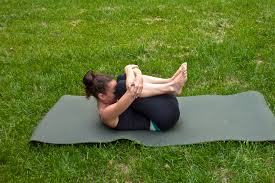
- Lie down comfortably on a yoga mat.
- Exhale the air from the lungs and stop breathing.
- Lift your left leg, bend it at the knees and bring it up to your stomach.
- The knee should touch the chin while the rest of the leg touches the chest.
- Receive pressure on your stomach and chest by pressing down the leg
- Lift your neck and place your chin on the knee.
- Continue to remain in this posture for as long as you can hold your breath.
- Slowly breathe, straighten your leg and put your head back on the mat.
- Repeat the exercise with the right leg.
- Now repeat the same exercise with both legs.
- Repeat the entire exercise three times.
Ardha Matsendra Asana
The movements during Ardha Matsendra Asana help in urinary Incontinence and improve digestion by toning the spleen, liver, kidney, spinal nerves, and ligaments. The half-Spinal Twist pose rotates the spine and bends the spinal column backward, forward, and laterally.
How to do Ardha Matsendra Asana (The Half Spinal Twist)

- Keep your legs together and kneel. Rest them on your heels.
- Sit to the right of your feet, as shown in the image.
- Lift your left leg over your right leg. Place your foot against the outside of the right knee.
- Bring your right heel in and close to your buttocks. Keep your spine erect.
- Stretch your arms out to the side up to the shoulder level and twist around to the left.
- Bring your right arm down on the outside of the left knee and hold the left foot in the right hand. Place your left hand on the floor behind you.
- Exhale the air and twist as far as possible to the left.
- Now look over the left shoulder.
- Repeat the exercise 3 times with each right and left twist.
Lose Weight-
If you are overweight, losing weight would be an important step towards reducing incontinence. Excess belly fat puts additional pressure on the urinary bladder, pelvic muscles, and upper GI tract. Therefore, shedding a few pounds can restore your bladder control and act as a natural remedy for urinary incontinence.
Biofeedback-
Biofeedback helps you identify and strengthen your pelvic floor muscles by using electrical sensors to monitor the muscles. It is also beneficial if you are considering doing Kegel exercises. Biofeedback training educates you about the use of signals from your body and enables you to control incontinence symptoms.
Acupuncture-
Acupuncture is beneficial for those with urinary incontinence and overactive bladder symptoms. It can help reduce the urgency and frequency of urination and restore the balance of the body. Acupuncture is worth trying for people suffering from urinary incontinence.
Meditation-
Meditation can help reduce the number of urge incontinence episodes. Cognitive therapy involving guided soothing imagery exercises and deep breathing techniques, which form the basics of meditation, helps train the brain to control the bladder. Try meditation, relaxation, and visualization exercises for a few weeks, and you might notice an improvement in your incontinence symptoms. By controlling your brain, you can control your body.
Medical Supplies for Overactive Bladder
Pessary-
A pessary can help decrease stress incontinence in women. It is a ring-like device inserted into the vagina and is designed to lift and support the vagina and bladder neck. Using pessary requires good local hygiene, and in some cases, hormonal cream is required to avoid vaginal wall irritation. Pessaries can stay in place for approximately a week. However, some women prefer using Pessaries indefinitely.
Adult Diapers and Pads-
Adult diapers come in different shapes, sizes, and features to cater to urinary incontinence patients’ needs. The disposable underwear for incontinence patients has a cotton-like outer material with an efficient inner layer to absorb greater liquid quantities. Absorbent panties for women effectively absorb several ounces of fluid and are suitable for mild to moderate incontinence. Absorbent pads are the easiest solution for tackling urinary incontinence. You can wear them along with regular underwear. Skin cleansers are required to maintain hygiene and are specifically designed for patients with overactive bladder.
Read More- Thick water for easy and safer swallowing

Dr. Haseena Hamdani, MBBS, DGO, PGD Endocrinology and Diabetes (USW) is a Gynaecologist, currently practicing in Gaborone, Botswana since the last 17 years. Prior to setting up this clinic she worked in India as well as in Zambia, as a Gynaecologist and Obstetrician and was also associated with an Infertility center. She is also an online tutor for the University of South Wales.

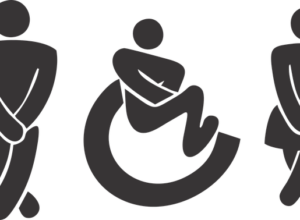



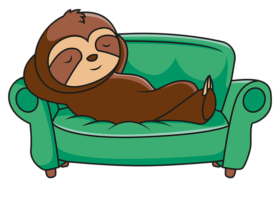

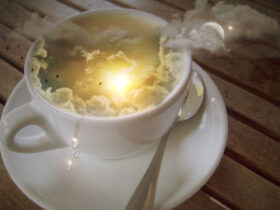
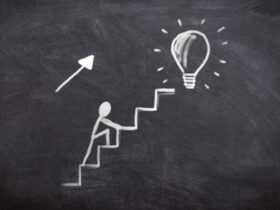



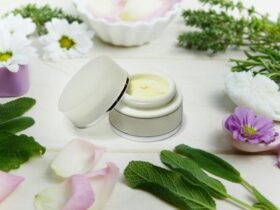
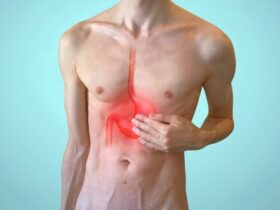
1 Comment